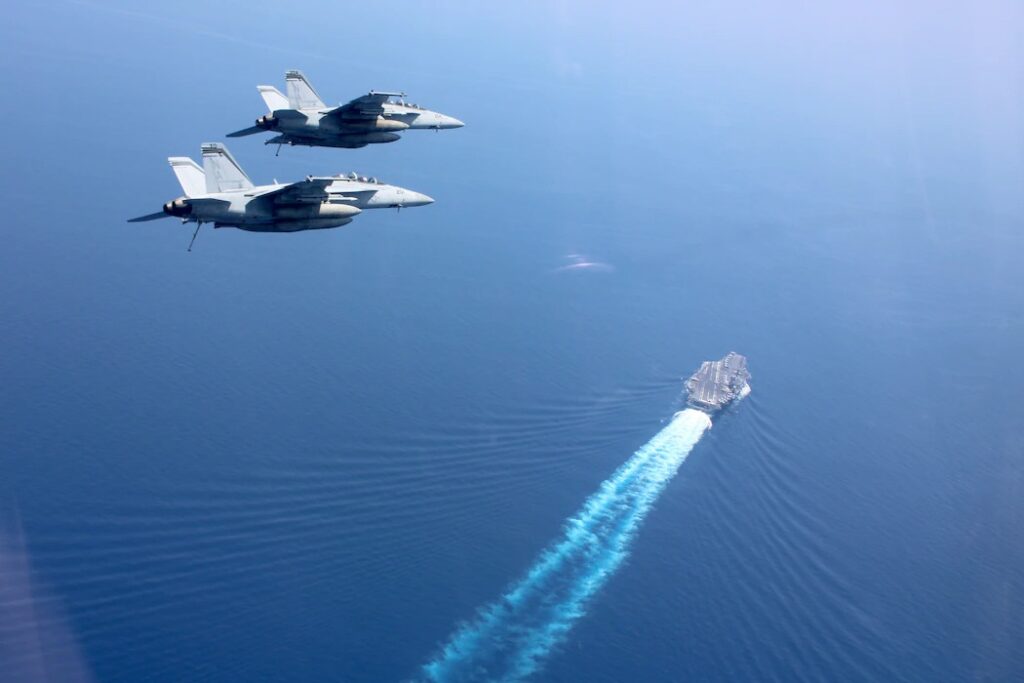
*****
ARLINGTON, Va. — The U.S. Navy’s aircraft carrier force is losing relevance because of a lack of investment in the aircraft that it carries, a naval analyst said.
“We are a carrier-based force, so we have the 11 aircraft carriers mandated by law,” said Dr. Jerry Hendrix, senior fellow of the Sagamore Institute, a retired Navy captain, and former director of the Navy History and Heritage Command, speaking May 1 at an event at the Hudson Institute, a Washington think tank. “We built our navy around the aircraft carrier ever since the Battle of Midway. It is the preeminent platform in our navy. And yet, because of the lack of investment in the carrier air wing itself, the carriers themselves are losing their relevance.”
“We’re actually seeing this in wargame activities, whether it’s wargames in the commercial or civilian sector or academic sector or whether the things we’re hearing out of the Pentagon, where the carriers are having lesser and lesser roles to play in some of these wargames,” Hendrix said. “So, if you want the carrier to remain relevant as a centerpiece, you have to make significant investments in that carrier air wing to get to a long-range, penetrating strike capacity back that will allow those carriers to operate in anti-access/area-denial environments.”
Hendrix also said the Navy needs to look hard at the force mix between the Atlantic and Pacific regions. He said he believes a greater submarine capacity is needed in the Pacific region than necessarily in the Atlantic, despite the fact that the primary Russian naval threat is its attack submarine force.
He noted the Navy’s return to building frigates, with the Constellation-class guided-missile frigate now under construction.
“We need to have the frigate be a frigate, providing presence, convoy escort,” he said. “Don’t ask every frigate to be a destroyer and don’t ask every destroyer to be a cruiser and a battleship — it’s what we’ve done in recent years. We need to look at that small-end, small-capacity, small surface combatants and drive more investment into whether it’s manned or unmanned, getting back out there to be able to operate in small, confined spaces but also build more platforms at a cheaper price.”
Hendrix indicated that he sees the traditional carrier strike group as needing to be re-thought.
“I would see us really departing from the tried and the true, the standard method of one carrier, two cruisers, four destroyers, and two attack submarines,” he said. “I want to see the fleet of the future look significantly different than the fleet of today. In fact, if it doesn’t, we’ve made a strategic mistake at that point.”






